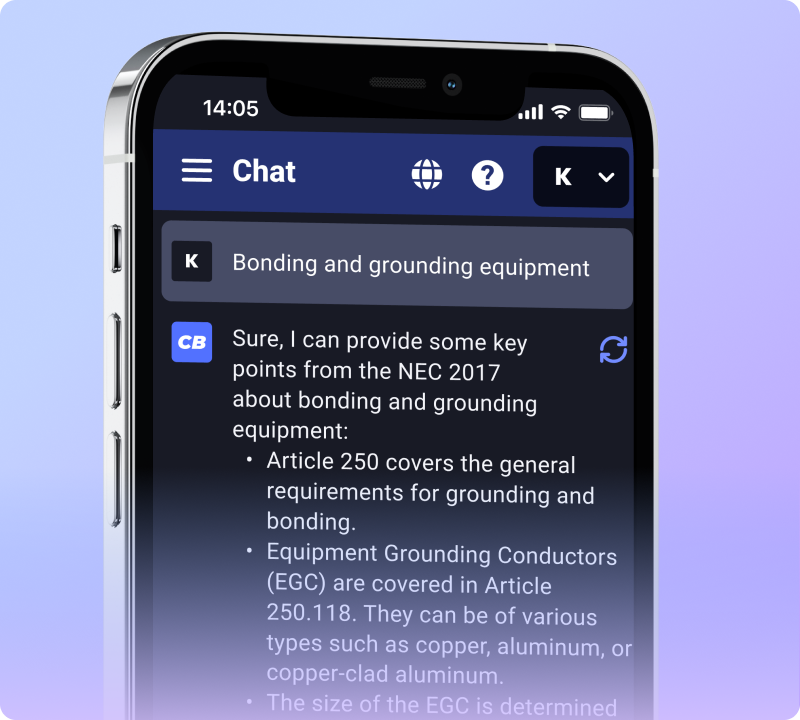Choosing the right electrical wiring for your project can be tricky, especially when comparing AC cable vs MC cable. One key fact is that these cables differ fundamentally in grounding and insulation features.
This article will guide you through the differences between these two types of cables and their best applications, making your decision easier. Read on to discover which cable suits your needs best.
Key Takeaways
- AC cables have a plastic sheath and are used indoors where there is no moisture. They use a bonding strip for grounding.
- MC cables use a metal sheath to protect the wires, making them better for outdoor or wet conditions because they have an insulated ground wire.
- For home wiring, AC cables are usually chosen. But for tougher places like outdoors, commercial buildings, or wet areas, MC cables are preferred because of their durability and safety features.
What Are AC and MC Cables?
AC cables carry electrical power in homes and buildings. MC cables protect wires with a metal sheath, making them suitable for tougher environments.
Definition and uses of AC cable
AC cable, also known as Type AC cable, is primarily used for indoor residential and commercial applications. It consists of insulated conductors covered by a flexible metal sheath.
This design allows it to be utilized in various wiring methods where protection from physical damage is not a concern and wet conditions are avoided.
The key feature of AC cables is the bonding strip that acts as an equipment grounding conductor. This makes them suitable for many installations while adhering to electrical codes.
They excel in environments without moisture exposure, making them a common choice for power distribution within buildings.
Understanding the right application of each type of cable enhances electrical safety.
Definition and uses of MC cable
MC cable, or metal-clad cable, consists of one or more insulated conductors along with a full-size ground wire. Its construction features an outer jacket made of thin metal armor, which offers enhanced protection against physical damage and environmental factors.
This durability makes MC cables particularly suited for outdoor and wet location installations where exposure to moisture may occur.
The presence of a standard ground wire provides additional safety features in electrical installations. MC cables are commonly utilized in commercial settings as well as industrial applications due to their versatility and reliability.
They meet specific building codes that make them suitable for a range of environments, including those that require robust grounding solutions like copper bonding strips or aluminum bonding strips.
Key Differences Between AC and MC Cables
AC cables have a flexible construction and use a plastic sheath for insulation. MC cables feature a metal sheath that provides extra protection and grounding.
Insulation and grounding differences
Insulation and grounding are crucial factors that differentiate AC cables from MC cables. AC cable relies on a bonding strip for grounding, creating a less reliable connection in certain scenarios.
In contrast, MC cable features a full-size insulated ground wire within its construction. This built-in ground provides enhanced safety and reliability for various electrical installations.
The insulation quality also varies between the two types of cables. While both utilize armor sheathing, the thin metal armor of MC cable offers superior durability and protection against wet conditions compared to AC cable’s simpler design.
These distinctions make understanding insulation and grounding essential for choosing the right type of cable based on your project needs. Next, we will explore key differences in materials and construction between these two cables.
Materials and construction
AC cables consist of insulated conductors wrapped in a flexible plastic sheath. They rely on a bonding strip for grounding, which can be less protective compared to other options. MC cables feature an outer jacket made from thin metal armor surrounding the individually insulated conductors.
Each MC cable includes a full-size ground wire for enhanced safety and protection against electrical faults.
The materials used in AC and MC cables significantly impact their applications. The steel sheath of the MC cable provides durability, making it suitable for outdoor and wet location installations.
In contrast, AC cables are primarily designed for indoor use where wet conditions do not pose a concern. Understanding these construction differences helps electricians select the appropriate cable for specific building construction needs or electrical equipment requirements.
Differences in applications
Applications for AC and MC cables differ significantly due to their construction and safety features. AC cables are typically used for indoor residential and commercial environments where moisture is not a concern.
Their bonding strip offers some level of grounding; however, they lack a dedicated ground wire. In contrast, MC cables have a full-size ground wire incorporated within their armored structure.
This feature makes them suitable for outdoor installations and wet locations where enhanced protection from environmental factors is necessary.
MC cables are often more cost-effective than AC cables because their metal armor provides superior durability and resistance to damage in challenging conditions. The robust design of the MC cable allows it to withstand exposure to water and other elements, making it preferable for various applications that demand higher safety standards.
Understanding these differences helps electricians choose the right type of electrical cable based on specific project requirements, ensuring both efficiency and safety in installations.
Best Applications for AC and MC Cables
AC cables work well in residential settings. MC cables are ideal for commercial and industrial use.
Residential vs. commercial use
AC cables are typically used for indoor residential projects where wet conditions aren’t a concern. They rely on a bonding strip instead of an insulated grounding wire, making them suitable for standard home wiring.
In contrast, MC cables excel in commercial settings due to their added durability and protection against moisture. The metal armor surrounding the conductors provides enhanced safety features, making Type MC particularly fitting for areas exposed to harsher conditions or wet locations.
Understanding these distinctions is crucial for selecting the appropriate cable based on specific installation requirements and environments. This leads us into the next topic: outdoor vs.
indoor installations.
Outdoor vs. indoor installations
AC cables are commonly used for indoor residential and commercial applications where wet conditions are not a concern. They rely on a bonding strip instead of a traditional ground wire, making them suitable for dry environments.
MC cables excel in outdoor installations thanks to their metal armor and full-size ground wire, providing enhanced protection against moisture and physical damage. This durability makes MC cable an ideal choice for wet locations, ensuring safety and reliability in various electrical projects.
Electricians often prefer these characteristics when assessing options for conduit systems or other shielding requirements.
Wet vs. dry locations
MC cables are often preferred for wet locations due to their enhanced durability and protection. The metal armor surrounding MC cable provides superior resistance against moisture, making them suitable for outdoor installations or areas where water exposure is a concern.
On the other hand, AC cables are typically used in dry environments where there is no risk of dampness. Their bonding strip relies on proper installation without additional grounding which can limit their effectiveness in wet conditions.
The choice between these two types of electrical cables significantly impacts safety and functionality. Understanding these differences helps electricians select the right cable for specific applications, ensuring compliance with regulations and enhancing protection against hazards.
Next, we will explore residential versus commercial uses for AC and MC cables.
Conclusion
Understanding the differences between AC and MC cables is crucial for any electrician. AC cables work well in dry, indoor environments, while MC cables shine in outdoor or wet conditions due to their metal armor and grounding features.
Selecting the right cable type enhances safety and effectiveness in electrical installations. Choosing wisely ensures long-lasting performance tailored to specific needs.
FAQs
1. What are the key differences between AC and MC cables?
AC (Armored cable) and MC (Metalclad) both fall under the category of armored cables, but they differ in their sheath design and magnetic field protection.
2. How does an AC cable’s construction compare to that of an MC cable?
The AC Cable is designed with a metal armor layer for protection while the MC Cable has additional insulation layers within its sheath for better magnetic field protection.
3. When should I opt for an AC cable over an MC cable or vice versa?
Your choice depends on your application needs. If you require enhanced magnetic field protection, go for the Metalclad (MC). For general applications where EMT isn’t feasible, Armored Cable (AC) could be sufficient.
4. Is there any other type of cabling I should consider besides AC or MC?
Yes! EMT or Electrical Metallic Tubing might be a suitable alternative depending on your application as it offers robustness similar to armored cables.


